If you’re a homeowner with property that cascades with the contours of the land, understanding hillside stabilization is more than a mere interest—it’s a necessity. As nature’s beauty often comes with challenges, slopes can be susceptible to erosion, landslides, and shifting soils.
In this blog post, we will explore an array of techniques used to keep hillsides firmly in place. Whether you’re looking to safeguard existing structures, or considering the development of a sloped parcel of land, the insights shared here will prepare you for making informed decisions.
Hillside Stabilization Methods
If your property has significant slopes, the chances are that you could benefit from some form of slope stabilization. When slopes lack stability, they are far more prone to erosion and other problems. The good news is that there are plenty of helpful slope stabilization methods that you can use to keep your property intact. Some of the most popular methods of adding stability to a slope include the following:
Regrading
The simplest way to add greater stability to a slope is to regrade it. However, this approach only works if you have enough space in your yard to lessen the steepness of your slope. To understand how this regrading process works, recall that every slope consists of both a rise and a run.
If the overall rise of a slope is to remain the same, the only way to reduce the steepness of the hill is to increase the run. In other words, increasing the horizontal distance over which the slope rises allows the slope to be much gentler and less prone to erosion.
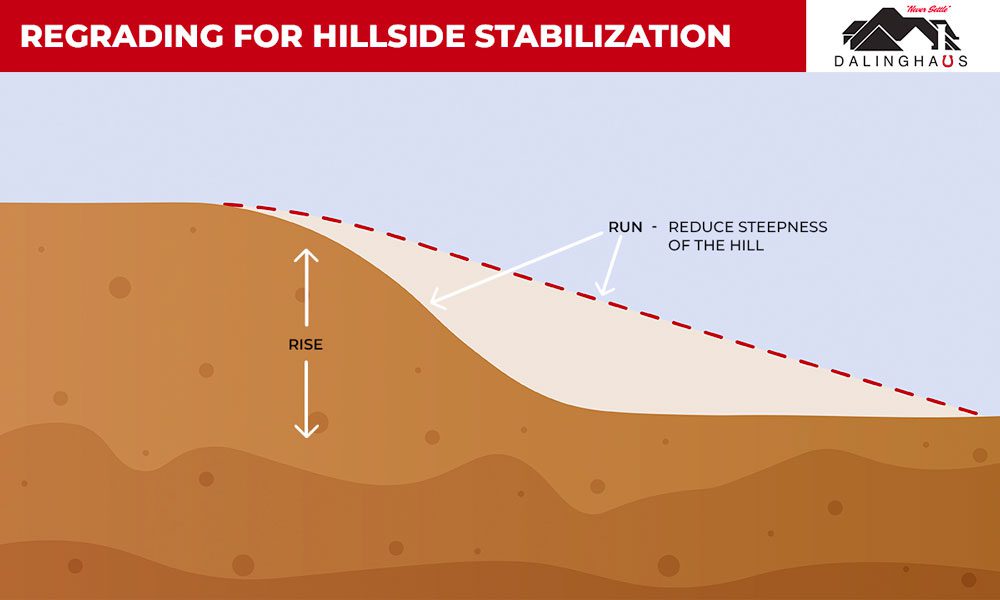
What makes re-grading so simple and cost-effective is that it involves nothing more than moving soil until your slope is no longer too steep. Unfortunately, in many cases, properties lack the space to lessen the steepness of a hill through regrading. In such cases, you’ll need to turn to one of the slope stabilization methods to follow.
Vegetation
Another simple yet effective way to stabilize a slope is to add vegetation. The roots of many plants can hold the soil in place and dramatically reduce the effects of erosion. Ground cover plants such as juniper, pachysandra, ajuga, and many other species are excellent for this role. However, even a simple planting of lawn grass can work wonders for an eroding hillside. Admittedly, some slopes are simply too steep for plantings to prevent their erosion. Still, there remain many instances in which a spreading root system can add stability to a hillside’s soil.
Erosion Control Blankets
Another method for holding a slope in place involves laying out erosion control blankets. Erosion control blankets come in several different varieties, all of which serve the same purpose. These blankets typically come in a roll and can consist of a wide range of materials, including straw, jute, coconut, and geotextile materials. The main benefit of using one of these blankets is that they can hold a slope in place even if the hill lacks plants to keep the soil in place.
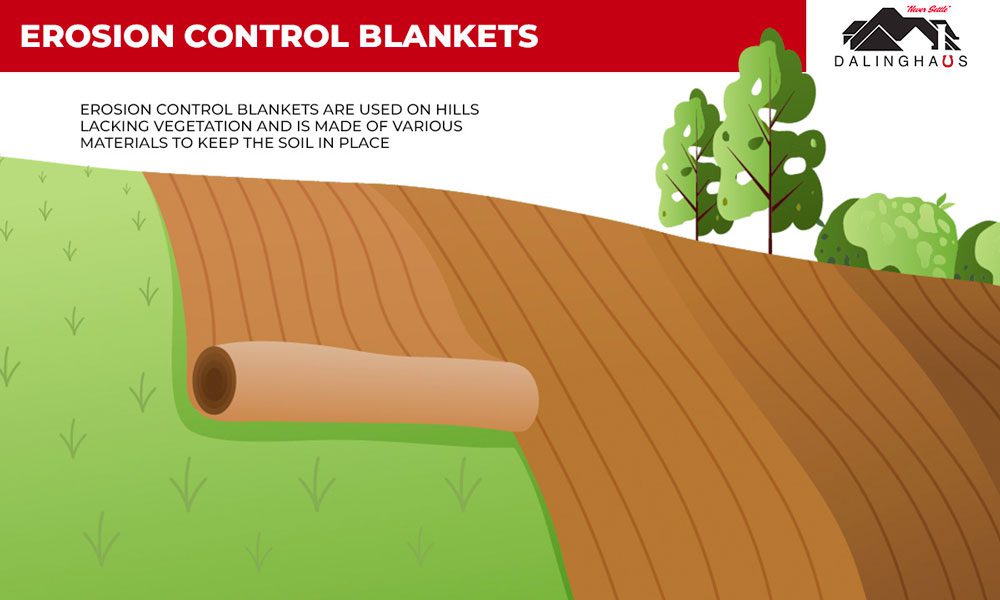
In most cases, construction and landscape teams use erosion control blankets as a temporary stabilization method until newly seeded plants have a chance to grow and contribute to the stabilization effort. Still, whether for temporary use or not, erosion control blankets are a relatively quick and easy way to stabilize a slope in your yard.
Drainage Structures
Water is the most prominent cause of slope erosion. As such, improving the drainage systems on your property is a great way to not only manage stormwater but also add longevity and structural integrity to your slopes. One of the best drainage systems you can use to protect your slopes is known as a drainage channel or French drain. These drains run along the length of your slope and intercept water as it flows down the hill.
By intercepting water, French drains limit the degree to which the water can degrade the slope. After collecting the water, the drain will convey it away and deposit it in a location where it is less likely to cause erosion.
Retaining Walls
Our final slope stabilization technique is the most expensive but also one of the most effective and long-lasting. Building a retaining wall remains one of the most reliable ways to hold back a hillside and allow the slopes both above and below the wall to become less steep.
Retaining walls come in many different styles and can include materials such as natural stone, concrete, masonry, and much more. Regardless of the material you use, retaining walls account for several feet of a slope’s vertical rise, which is what allows the remaining slope to become less steep and erosion-prone overall.
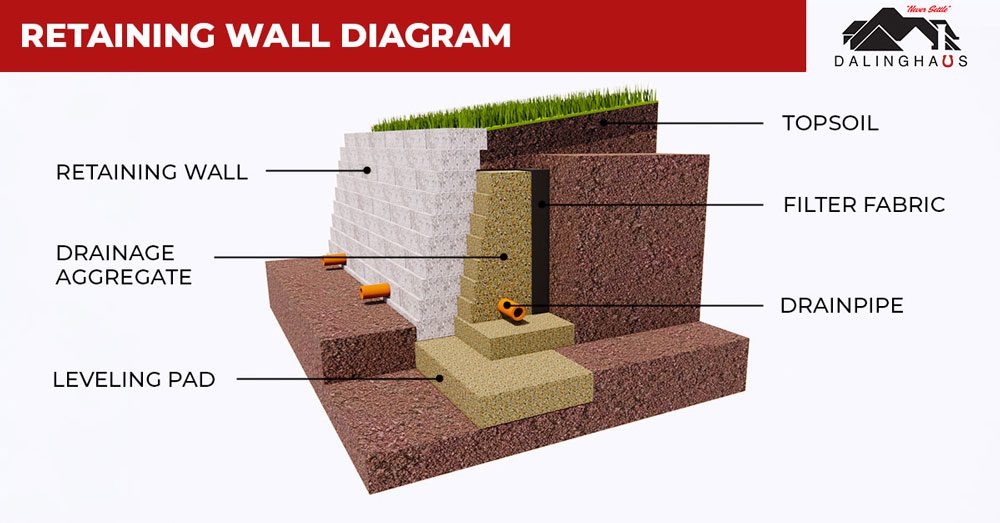
Since a well-built retaining wall includes drainage structures, these constructions are also capable of improving the stormwater management on your property. However, the most significant benefit of choosing retaining walls for slope stabilization is that they have good longevity, often lasting for many decades without repairs or replacement.
What Causes a Slope to Erode
Now that you know about five of the most reliable slope stabilization methods, let’s discuss some of the reasons why these techniques are necessary. Below is a list of the most prevalent causes of slope erosion:
- Water: When it rains, water flows down your slope. As the water flows, it displaces soil, causing the hill to erode.
- Steepness: Steeper slopes cause water to flow more quickly. This effect only exacerbates the erosive impact of stormwater. Steeper slopes also struggle more to hold soil in place, whether water is present or not.
- Lack of vegetation: As mentioned previously, the root systems of plants help to hold slope soil in place. By contrast, bare soil lacks protection, making it far more prone to erosion.
- Poor soil structure: Simply put, some types of soil are stronger and more capable of holding their shape than others. If your property includes soil with a weak structure, erosion becomes more likely.
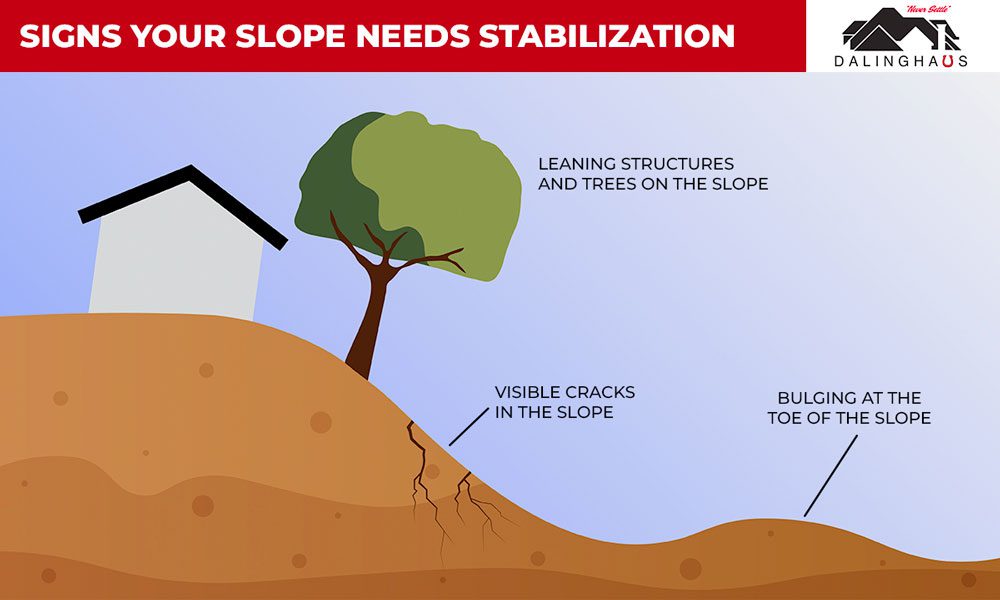
Signs Your Slope Needs Stabilization
Before we conclude this article, let’s cover a few of the signs that your slopes need greater stabilization. Below is a list of indicators you should look out for when evaluating the stability of your slopes. If one or more of these are present, there is a strong possibility that erosion is a problem for your hillside:
- Visible cracks in the slope
- Leaning structures and trees on the slope
- Bulging at the toe of the slope
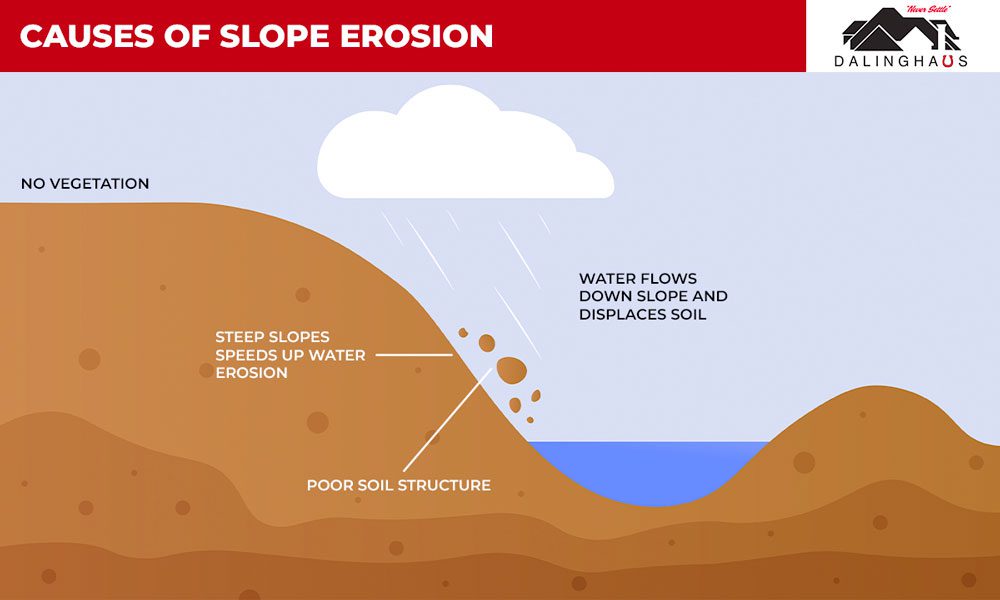
The signs above are something that any homeowner can detect. However, finding the best solution for your eroding slope requires the assistance of an expert professional.
Get Professional Slope Stabilization Assistance
Are you concerned about the slopes on your property? If so, the best approach you can take is to hire a professional construction company to evaluate them for you. The right team will quickly determine the severity of your erosion problem and match you to the ideal solution for your situation.
For anyone in Southern California, Arizona, or Nevada, Dalinghaus Construction is the best team you can choose for this type of work. We have experience with retaining walls and providing a wide range of other construction services. Reach out to us today to learn more about what we can offer you.






